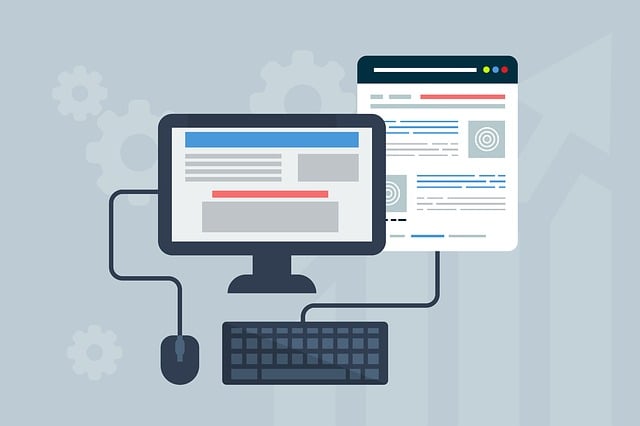E-commerce Website Design: A Cornerstone of Online Success
A well-designed e-commerce website is crucial for online business success, attracting visitors, encouraging exploration and purchases, and fostering repeat visits. Effective ecommerce website design blends visual appeal with functionality, balancing aesthetics and usability to create a positive user experience. Key elements include:
Intuitive navigation: Easy discovery of products through clear categorization and filters.
Visual appeal: High-quality images, attractive branding, and interactive elements like videos or 3D models.
Strategic CTAs: Nudge users towards desired actions with well-placed, compelling "purchase now" buttons.
Mobile responsiveness: Adaptive design for seamless browsing across all devices.
* Data-driven optimization: Continuous testing and iteration based on user feedback and analytics to enhance UX and drive conversions.
E-commerce stores are the digital storefronts of modern business, and their design plays a pivotal role in converting visitors into buyers. In this article, we delve into the essential components that constitute effective e-commerce website design. From understanding the profound impact of aesthetics to optimizing for mobile users, each element contributes to creating an engaging user experience. Discover key strategies, including layout choices, visual branding, UX best practices, and more, to elevate your online retail presence and boost sales.
Understanding the Impact of E-commerce Website Design

The design of an e-commerce website plays a pivotal role in shaping the user experience, which is the cornerstone of online business success. A well-designed e-commerce site not only attracts visitors but also encourages them to explore products, make purchases, and return for more. With the competition among online retailers being fierce, investing in professional e-commerce website design is no longer an option but a necessity.
A visually appealing and user-friendly interface enhances brand perception, builds trust, and fosters a sense of comfort among customers. Effective use of colors, typography, and imagery can subtly influence buyer behavior, leading to increased conversions. Additionally, intuitive navigation, clear product categorization, and concise product descriptions contribute to seamless browsing, enabling shoppers to find what they want quickly and effortlessly. Ultimately, a thoughtful e-commerce website design strategy translates into higher customer satisfaction, brand loyalty, and bottom-line growth.
Key Elements for a Successful E-commerce Store Front

A successful e-commerce store front is a carefully crafted digital space that not only showcases products but also captivates and converts visitors into buyers. At the heart of this success lie several key elements integral to effective ecommerce website design. Firstly, an intuitive navigation system is paramount; users should effortlessly browse categories and subcategories, finding their desired items with minimal effort. This ease of discovery fosters a positive user experience, encouraging exploration and potential purchases.
Visual appeal is another critical aspect. High-quality product images, well-designed layouts, and attractive branding create an aesthetically pleasing environment that engages customers. Incorporating interactive elements such as video demos or 3D models can further enhance the shopping journey, providing clients with a more immersive experience. Ultimately, seamless integration of these components contributes to a robust ecommerce website design, fostering user satisfaction and driving online sales.
Choosing the Right Layout and Navigation Structure

When designing an ecommerce website, selecting the optimal layout and navigation structure is paramount. It directly impacts user experience, conversion rates, and ultimately, sales. A well-thought-out design should balance aesthetics with functionality, ensuring a seamless flow for customers browsing products. Incorporate intuitive navigation menus, clear product categorization, and easy-to-use filters to help shoppers find their desired items swiftly.
The layout should be structured to guide users naturally through the purchasing process. This involves strategically placing call-to-action buttons, showcasing product recommendations, and optimizing the checkout process. Remember, a user-friendly ecommerce website design not only enhances customer satisfaction but also encourages repeat visits, fostering long-term business growth.
Visual Appeal: Colors, Typography, and Branding

A visually appealing ecommerce website design is essential for capturing customers’ attention and encouraging them to browse and purchase. Colors play a significant role in setting the tone and evoking emotions. A thoughtful color scheme can enhance brand recognition, improve user experience, and even influence purchasing decisions. Incorporating your brand colors strategically across the site creates a cohesive look and feels inviting to visitors.
Typography is another critical aspect that contributes to the overall aesthetic. Selecting the right fonts and ensuring they are easy to read is vital for delivering content effectively. Consistent typography choices throughout the ecommerce website design, from headings to body text, help maintain a professional appearance. Alignment with your brand’s voice and values through typography further reinforces your brand identity, making it more memorable for potential customers.
Optimizing for Mobile and Responsive Design

In today’s digital era, an optimal ecommerce website design is non-negotiable. With a majority of online shoppers using mobile devices, it’s crucial for stores to embrace responsive design. This means ensuring your ecommerce site seamlessly adapts to different screen sizes and resolutions, providing a consistent user experience across desktops, tablets, and smartphones. A well-optimized mobile layout improves visibility, enhances navigation, and facilitates quick checkouts, thereby encouraging higher conversion rates.
Responsive design isn’t just about aesthetics; it’s a critical component for boosting customer satisfaction and retention. Mobile users expect instant access to product information, smooth browsing, and hassle-free transactions. By prioritizing responsive design in your ecommerce website design strategy, you’re not just keeping up with industry trends but also ensuring your online store stays competitive in a crowded market.
User Experience (UX) Best Practices for E-commerce

A well-designed ecommerce website is more than just an attractive storefront; it’s a strategic framework to enhance user experience (UX) and drive conversions. Central to this is ensuring seamless navigation, intuitive product search, and clear call-to-actions throughout the buyer’s journey. Integrating user reviews and social proof not only builds trust but also guides prospective customers in their purchasing decisions.
Beyond basic functionality, ecommerce website design should prioritize mobile responsiveness, fast loading times, and consistent branding to foster a seamless and enjoyable shopping experience across all devices. Leveraging analytics to understand customer behavior allows for data-driven UX optimizations, continually improving the site’s performance and user engagement.
Incorporating High-Quality Visuals and Product Descriptions

In an era where first impressions matter significantly, high-quality visuals play a pivotal role in the success of any ecommerce website design. Incorporating stunning product images that showcase every angle and detail can dramatically enhance user experience. These visual elements not only attract attention but also build trust, allowing shoppers to make more informed purchase decisions. High-resolution photos, lifestyle imagery, and even 360-degree views can transform a simple online store into an engaging virtual showroom.
Complementing these visuals are detailed, compelling product descriptions. Well-crafted copy that highlights key features, benefits, and unique selling points is essential for converting browser interest into sales. Ecommerce website design should prioritize clear and concise language, ensuring each product description tells a story that resonates with the target audience. By combining powerful visuals and persuasive text, online retailers can create a captivating environment that encourages users to browse, engage, and ultimately, make purchases.
Call-to-Action (CTA) Buttons and Their Placement

E-commerce websites thrive on guiding visitors through a clear sales funnel, and Call-to-Action (CTA) buttons play a pivotal role in this process. Strategically placed CTAs prompt users to take the desired action—whether it’s purchase now, add to cart, or subscribe. In an ideal ecommerce website design, these buttons are not just visually appealing but also seamlessly integrated into the user interface. Their placement should align with principles of usability and psychological triggers, such as positioning them above the fold to capture immediate attention without disrupting the overall aesthetic.
A well-designed CTA can significantly boost conversion rates by creating a sense of urgency and reinforcing the benefits of the offered product or service. E-commerce website designers should experiment with different button colors, sizes, and copy to optimize for click-throughs while ensuring a consistent brand identity. Effective CTAs are tailored to target audience preferences and behaviors, making them an indispensable tool in maximizing sales and driving business growth online.
Testing and Iterating for Continuous Improvement

In the dynamic realm of e-commerce, where competition is fierce and customer expectations are ever-evolving, a static website simply won’t cut it. Continuous testing and iteration are essential components of successful ecommerce website design. This involves regularly gathering user feedback, analyzing key performance indicators (KPIs), and making data-driven decisions to optimize the shopping experience. By A/B testing different layout options, call-to-actions, and product displays, retailers can uncover insights that drive conversions and foster a more engaging online environment.
Iterative design is an ongoing process that ensures the ecommerce website remains agile and responsive to market trends. Staying current with industry best practices, leveraging user feedback, and staying attuned to emerging technologies are all part of this equation. Through consistent testing and refinement, e-commerce businesses can create a dynamic digital storefront that not only attracts visitors but also converts them into loyal customers.
